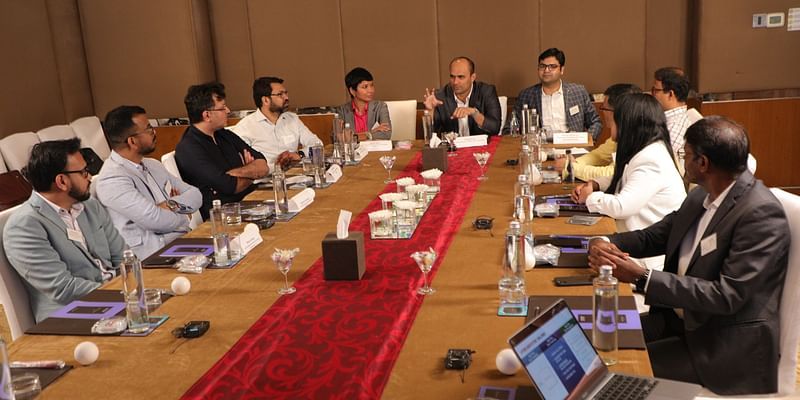
Digital effectiveness demands organisations to be responsive and agile in today’s application-led landscape. With the exponential growth of data, technology leaders are asking, “How do I handle and analyze petabytes of data (or more) as fast as possible (i.e. in milliseconds)? And how can I do this at scale and deliver a great personalised customer experience?”
Technology leaders are demanding architectures designed to meet the demands of the world’s most forward-thinking data-oriented companies and the differentiating use cases they are building.
This challenge took centre stage at a recent roundtable discussion hosted by Volt Active Data in collaboration with YourStory. Experts from diverse industries converged to explore the intricacies of handling latency, scale, and cost in a highly concurrent, data-led environment.
Experts from various sectors, including finance, telecom, and insurtech, shared their experiences and insights, offering valuable strategies for robust app management in today’s fast-paced digital ecosystem.
Abhijeet Kamble, Chief Technology Officer at Moneyboxx Finance, emphasised the necessity for agile decision-making processes, which is particularly vital in serving markets with limited data. Pradipta Sarka, Director of Product at Loco, shared perspectives on handling unexpected user concurrency spikes during major esports events. Her emphasis on the need for low-latency solutions that are both effective and economical illuminated the evolving demands of digital platforms.
From the financial sector, Thiruvengadamani, Vice President and Head of App Engineering at Blinx (a JM Financial initiative), delved into the challenges of managing data flow from multiple exchanges to an expanding customer base. Mohsin Abbas, Vice President and Head of Product and Engineering at Jio, provided insights into the scale challenges inherent in managing a diverse array of consumer products. His focus on personalisation and the transformative role of 5G technology broadened the discussion to the overarching impact of technology on consumer experiences.
Bhushan Sonkusare, CTO at 360 ONE Wealth, shed light on backend data challenges involved in offering a wide range of investment products to high-net-worth individuals. Similarly, Nadir Mistry, Senior VP and Head of Technology at CASHe, highlighted the criticality of efficient system use and cost optimisation in the credit lending arena, offering valuable insights into the financial technology landscape.
Mitesh Jain, Chief Technology Officer at Symbo, an insurtech firm, shared the company’s journey from managing a modest number of transactions to handling millions each month. His stress on the importance of real-time data processing and personalised pricing underscored the evolving nature of the insurtech sector.
Technology leaders Fahad Khan, Sales Director – APAC, and Biplab Banerjee, Principal Solutions Architect, from Volt Active Data, emphasised the evolution and critical need for hyper-personalisation and real-time (sub-10 millisecond) data processing.
Per Khan: “Companies should not need to make trade-offs between high performance, scale, consistency, and low total cost of operations for globally distributed applications. At Volt, our customers are leveraging large-scale real-time data sets at exceptional speed, without compromises, to transform the way they do business.”
Maintaining system stability during unpredictable demand spikes
One pivotal point explored during the roundtable centred on the complexities of navigating unforeseen surges in user activity. This critical aspect brought to light the diverse strategies employed by industry leaders to maintain system stability during unpredictable demand spikes.
Most people agreed that a proactive approach and strategic infrastructure planning were pivotal. Anticipating high demand, optimising code, implementing caching layers, CDN, and load-balancing also emerged as common strategies.
This shared emphasis on fortifying system architecture highlights the significance of a resilient and adaptable approach in effectively managing high concurrency challenges across a spectrum of industries.
Sarka shared insights from Loco, recounting an incident during a live esports broadcast where a power outage caused a crash. The solution involved rapid hotfixes and a re-evaluation of home-fed services to create a more resilient system. Similarly, Abbas emphasised the importance of building isolated systems, drawing from experiences with support.apple.com and the Jio phone launch. Thiruvengadamani highlighted the daily challenge of managing rush hours in the stock market, necessitating a robust system with a DevOps setup for rapid transaction processing.
Abhishek Sinha, Head of Engineering at Avendus Capital, shared a unique perspective on the importance of considering all elements of network infrastructure in managing high-demand situations. His team’s experience with an unexpected DNS issue affecting iPhone users underscored the need to address diverse aspects beyond application capacity for a seamless user experience.
Achieving scalable low latency
The panelists stressed that technology frameworks should not only keep up with fast-paced advancements but, more crucially, actively navigate and overcome the intricate challenges posed by acting upon a real-time data strategy.
They spoke about various facets, ranging from the transformative impact of 5G to the critical importance of purpose-fit and adaptable architectures, especially within sectors like financial services. Furthermore, they discussed the realm of emerging challenges in data security and privacy, underlining the urgency for systems to seamlessly align with user privacy demands and swiftly adapt to potential regulatory changes.
To conclude the discussion, Khan synthesised the panel’s insights, emphasising the importance of real-time customer engagement, handling high concurrency at scale, and understanding workload patterns.
Khan highlighted two important aspects: first, the differentiation between real-time and non-real-time transactions, and second, the prioritisation of these transactions based on their importance to the business.
“As engineering teams shift their focus to building revenue-generating use cases, they need real-time data architectures that can expose their data pipelines to user-facing applications,” Khan said.
This approach is key to effectively employing a real-time data platform that helps to deliver seamless growth and adaptability to data-led enterprises.










